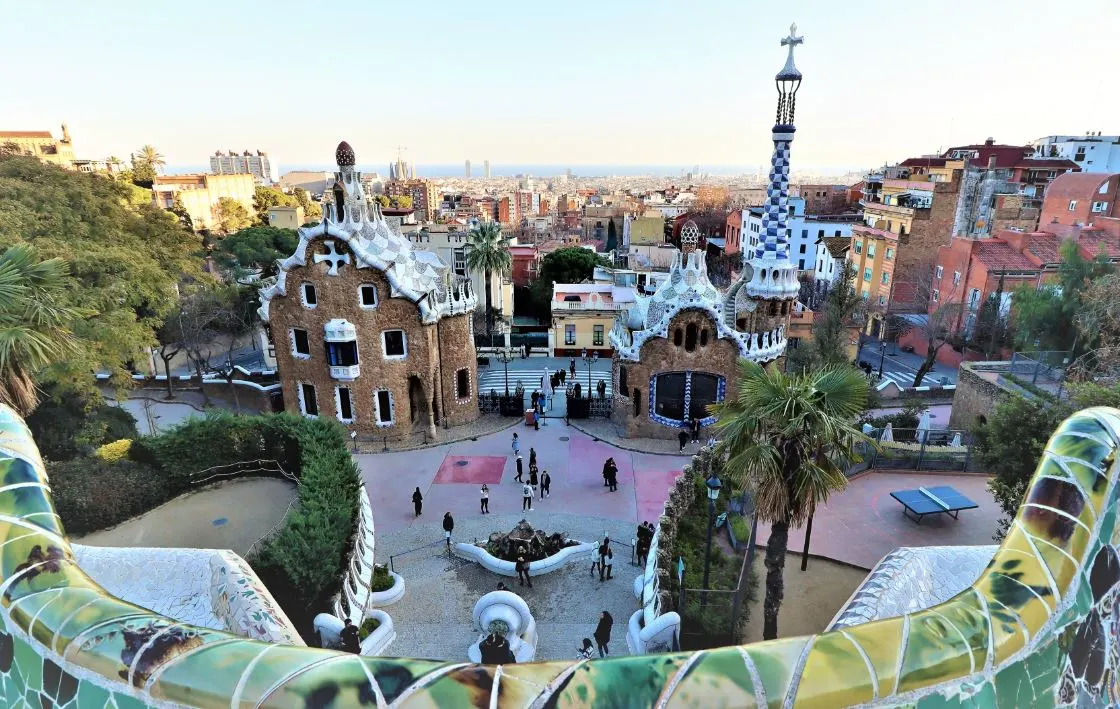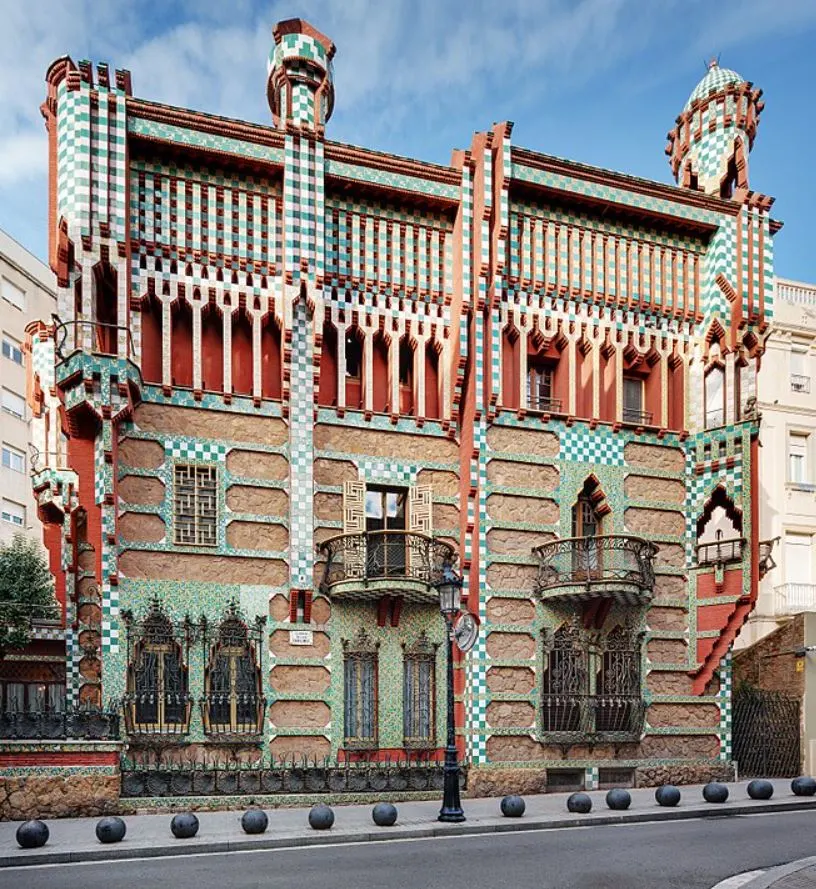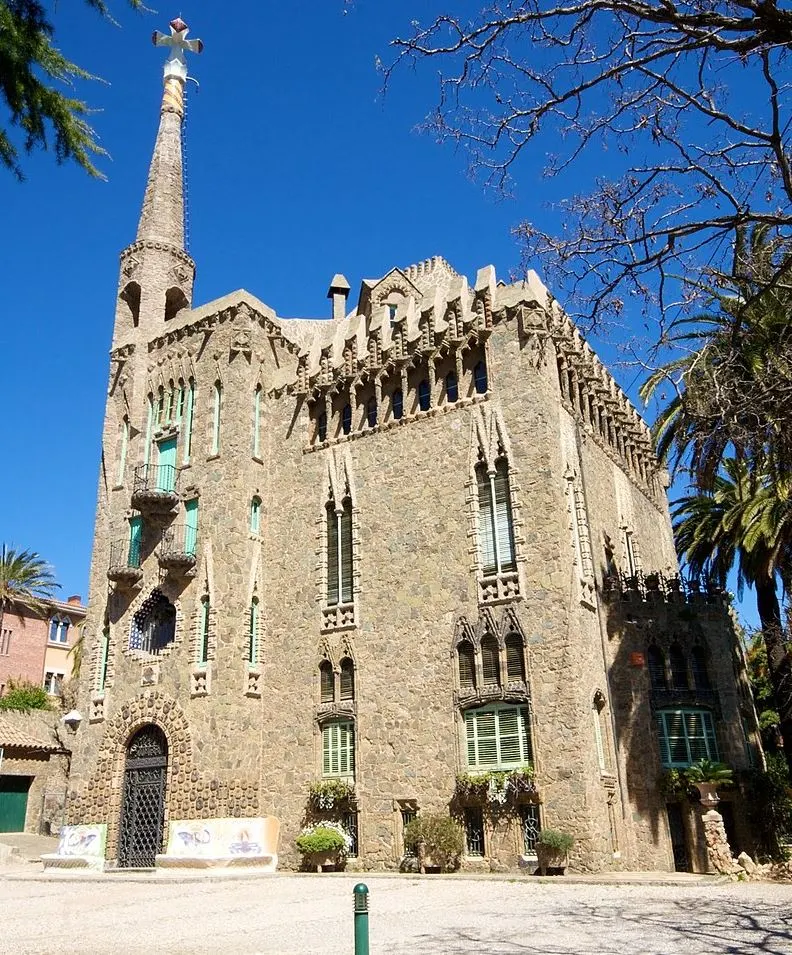The late 19th century was an exciting time in the history of architecture. because architects developed a completely new approach to building designs.
Antoni Gaudí i Cornet (1852-1926) was the main exponent of the so-called Catalan Modernism movement, the Spanish version of Art Nouveau which became increasingly popular at the time.
His style was highly individualistic and revolved around the three most important elements in his life, religion, nature, and architecture.
Apart from using motifs found in religion and nature, he also developed several unique architectural features, especially when it came to decorations.
He included a wide variety of elements in his buildings in Barcelona and its surroundings, including ceramics, stained glass, wrought ironwork, and carpentry.
The result was breathtaking, and in this article, you’ll discover some of Gaudí’s ultimate masterpieces.
1. Sagrada Família
The Sagrada Família is one of the most famous churches in the world and the ultimate masterpiece by Antoni Gaudí. It’s not just because the church remains unfinished today, but because of the stunning architectural design y the Catalan architect.
Gaudí started working on the initial design of the church in 1883 and not even a quarter of the building was completed when he passed away in 1926. It’s clear that he was inspired by Gothic cathedrals in other parts of Europe, but the architect added his own twist to this amazing church.

2. Casa Batlló
Casa Batlló is another fascinating building designed by Antoni Gaudí in Barcelona. Unlike all of the other buildings on this list, it was a residence that he completely remodeled and not a building that was constructed from scratch.

The façade of the building is completely covered in broken ceramic tiles referred to as “trencadís.” This was a typical element that recurs in many other works in the oeuvre of Gaudí. The arched roof was inspired by the back of a dragon and the turret gives the building a distinctive appearance.

3. Park Güell
Park Güell was one of the largest projects that Gaudí was involved in after the Sagrada Família. This extensive park and gardens feature a wide variety of architectural elements that majestically overlook the city of Barcelona from Carmel Hill in the Gràcia district of Barcelona.
The park was constructed between 1900 and 1914 and was opened to the public for the first time in 1926. It was one of the many projects that were commissioned by a rich industrialist named Eusebi Güell (1846-1918), Gaudí’s most important patron. It was originally part of a commercial real-estate project which turned out to be unsuccessful.

4. Palau Güell
Palau Güell was another commission from Eusebi Güell. It’s a mansion that was intended to serve as a place to welcome guests. That’s why Gaudí designed the interior of the place in such a way to make it a magical place to have parties in the late 19th and early 20th centuries.
The building was constructed between 1886 and 1888 which means it was one of the first major projects by Gaudí that was completed. Guests could arrive in horse-drawn carriages and ride right into the building. The hosts subsequently invited them into a large space with holes in the ceiling which gives the appearance of a starry sky.

5. Casa Milà
Casa Milà is a large building that is commonly referred to as “La Pedrera” or “The Stone Quarry.” It was constructed between 1906 and 1912 and was named after Pere Milà, the man who commissioned it. The huge stone façade of the building was an unusual feature at the time.
Even more remarkable is the fact that this is a self-supporting stone façade, a revolutionary feature in the early 20th century. The twisting wrought-iron balconies, the large terrace on the roof, and the open floor plan are other amazing features of this building designed by Gaudí.

6. Church of Colònia Güell
The Church of Colònia Güell is another unfinished church by Gaudí that was constructed in Santa Coloma de Cervelló, a suburb of Barcelona. The spectacular building was commissioned in 1898 but its construction didn’t start until a decade later in 1908.
The Crypt of the church was constructed between 1908 and 1918 and remains the only part of the building that was completed. The church was supposed to have an upper and a lower nave and the lower nave was completed between 1915 and 1917. This provides a glimpse of what Gaudí had in mind.

7. Casa Vicens
Casa Vicens is one of the most fascinating Gaudí buildings because it is considered to be the first major project he completed. The architect made the plans for this building in the Gràcia neighborhood of Barcelona between 1878 and 1880 and it was eventually constructed between 1883 and 1885.
This was a period in which Gaudí was still very much influenced by several other architectural styles, including Gothic Revival and Neo-Mudéjar architecture. The latter was clearly the main influence on this work and it was a precursor to the unique buildings he designed later on in his career.

8. Gaudí House Museum
The Gaudí House Museum is far from being the most impressive of Gaudí buildings but it remains extremely significant when we talk about the architect. It’s situated within the boundaries of Park Güell and served as his private residence for almost 2 decades between 1906 and 1925.
If you want to discover how the architect lived then you can visit this palce because it was transformed into a house museum that first opened its doors in 1963. The museum is owned by the Construction Board of La Sagrada Família Foundation and you can visit the ground and first floor (the building features 4 floors).

9. Bellesguard
Bellesguard is the Catalan word for “Beautiful View” and that’s a fitting description of this mansion in the Sarrià-Sant Gervasi district of Barcelona. It was constructed between 1900 and 1909 and is located on the site of a former estate of King Martin of Aragon who was also the Count of Barcelona.
This castle served as the main source of inspiration when Gaudí started drawing the plans for this mansion which is also known as “Casa Figueras.” This is why the building resembles a Gothic Revival structure that was adorned with beautiful mosaics.

10. Casa Botines
Casa Botines is a building in the heart of the Spanish city of Léon which is situated in the northwestern part of the country. It was named after Joan Homs i Botinàs, the man who commissioned it. He was a business partner and friend of Eusebi Güell who recommended Gaudí for this commission.
The building initially served as a residence with an adjoining warehouse but was later repurposed to serve as the local branch of the Caja España bank. Today, it houses a museum dedicated to Antoni Gaudí, Spanish art created in the 19th and 20th centuries, as well as the history of the building itself.

